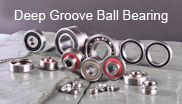The Water Pump,Water Pump Bearing
Willieí»s Workbench The Water Pump The water pump. Not something that you give a lot of thought to-that is, until it fails and leaves you stranded someplace where you doní»t want to spend the rest of your life. Water pumps are kind of funny-they can fail after fewer than 60,000 miles or go way over 250,000 miles. A lot of its life depends on how ití»s treated. No, you doní»t have to go out, raise the vehicleí»s hood, give it a pat and say "Nice water pump, good job," but you do have to give it a helping hand once in a while.
Ball Bearings Water pump failure comes in several forms. The first and worse is catastrophic failure where the water pumpí»s hub bearing freezes up and no longer will let the impellers turn. The second is where the seal assembly just past the impellers fails. When this happens, air can leak in, which allows air pockets within the engine, thus leading to overheating and radiator or coolant leakage. The third is wear to the impellers that prevents a positive circulation of coolant throughout the engine and radiator.
There are several things we can do to prevent early water pump failure. Letí»s start out with the fan. Yes, the fan. Bent blades or a loose fan clutch hub can set up a vibration that will lead to unequal loads on the water pumpí»s bearing as well as the seal. This will soon cause the seal to start leaking.
Ití»s easy to check for bent blades with a visual inspection. Ití»s almost impossible to straighten a fan blade should you have a bent one, so doní»t even try. Buy a new fan. You can check for a worn clutch hub by pushing up and down on the hub assembly with the belt loosened, checking for any movement. It would probably be a good idea to have the engine not running when doing this-ití»s easier on the fingers.
Excessive belt tension can also put too much side loading on the water pumpí»s bearing and cause early wear, so follow the factory recommendations for how tight the belt should be. The thing is that almost any vehicle manufactured after 1990 uses a special self-tensioning device as well as a single serpentine belt that connects to all the accessories. On V-belts or on a serpentine belt, a service manual will usually tell you to use a tension gauge to check for the proper tension. Just what every guy has in his toolbox, right? Okay, while ití»s not as precise, here is what you can do. It really doesní»t make any difference as to what kind of a belt your engine has. Put a straight edge along the length of the belt and a ruler at a 90-degree angle to the belt. Push down on the belt with your thumb.
A rule of thumb (yes, that is a pun) is that if the distance between the pulleys is less than 12 inches, the belt should deflect about 1/4 inch. Over 12 inches, it should deflect about 1/2 inch. Ití»s not rocket science to make an in-between-the-numbers adjustment. While you have that straight edge out, make sure that all the pulleys are in alignment. This is pretty important, as misalignment of the pulleys can lead to early belt failure as well as bearing failure in the driven unit, be it the power steering pump, water pump, or alternator.
Keeping the coolant clean is a very important part of water pump maintenance. Flakes of rust or hardened mineral deposits not only can damage the pumpí»s seal, but wear away the pumpí»s impellers. The additives in coolant lubricate the seal, and over time, they lose their effectiveness, so ití»s important to replace the coolant on a regular basis. In fact, should you have a water pump failure, ití»s also a good idea to totally flush the cooling system.



